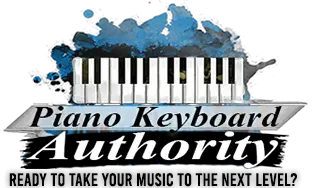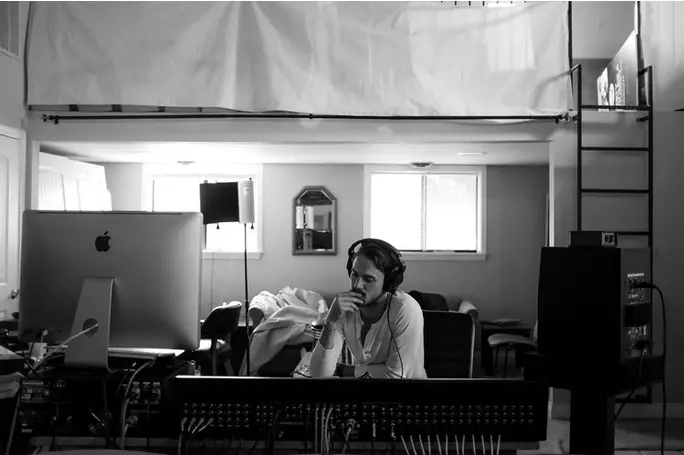Many people want to create music by themselves at the comfort of their own house or apartment, but they usually begin to ask themselves: “how to produce music from home?”, in which this informative article will cover.
Music production is also known as making music, which includes creating the sounds through playing an instrument or sequencing (arranging notes on a computer using a digital audio workstation or DAW), mixing the tracks, adding effects, putting the vocals (if any) and then mastering them altogether to have a balanced sound and much more.
Table of Contents
How can I make music at home?
Making music at home is no simple task, just as starting your own home business. But just because you don’t have a studio of your own yet (like the ones you see from celebrities) doesn’t mean you can’t make music on your own! If you are planning to make music at home, here are a few reminders and tips:
- Start with simple gear. For instance, if you currently don’t have a Macbook for making music (like all the pro DJs and EDM artists do), you can just stick to a normal desktop, laptop or notebook computer (or even your tablet) to do some work. You don’t have to get a MIDI keyboard or controller right away if you can’t afford one (though we suggest you do) as many musicians started off with the click-and-drag way of sequencing notes on their DAW.
- Get acquainted with studio terminologies. Know terms like “soundproofing” and the difference between mixing and mastering. Soundproofing means making your room acoustically-treated so outside noise won’t disturb your ears and your recording session. Mixing is basically leveling the individual instruments to have a clean mix while mastering usually involves leveling all tracks in your album/EP to be in the same volume or mixing style.
- Ask musician friends for help. If you’re not very good with music production or tech terminologies, you can ask friends from the internet or locally. You can get help from local DJs, songwriters, sound engineers, band members and the like. They may know a thing or two about sound quality and music production and may even give you tips!
- Be open to expansions. Don’t just stay contented in little gear – you can start to buy other great things for making your music production studio much better, such as a condenser microphone, a soundproof booth, a MIDI keyboard controller and much more.
What do you need to make music at home?
In order to make your first songs at home, here is the basic equipment you’ll need:
1. Computer (tower/desktop, laptop, notebook, etc.)
This refers to the computer that you’ll be working on. Keep in mind that to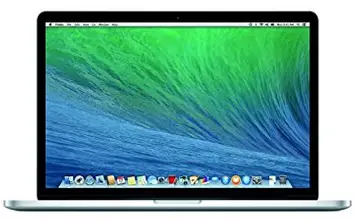 make your computer become DAW-friendly, it needs to be a little beefier than your average office computer. It needs to have some good amount of RAM and of course, a great sound card.
make your computer become DAW-friendly, it needs to be a little beefier than your average office computer. It needs to have some good amount of RAM and of course, a great sound card.
For this reason, many producers in the world usually have the Apple MacBook Pro MGXA2LL/A 15.4-Inch Laptop as their go-to music production computer. Apple products generally have a great reputation for being virus-free, which means less downtime for trying to recover your projects due to file corruption unlike in Windows and other systems.
Basically, a MacBook has much better specs than most Windows computers, simply because they’re built that way. But if you can’t afford a MacBook yet, just go with whatever PC you have – as long as your DAW can work just fine with it (explained below).
2. Digital Audio Workstation (DAW)
The DAW is where you’ll do the majority of your work. Common DAWs include FL Studio, Ableton Live, Logic Pro, Reason and Cubase. Logic Pro is the most common for Mac users while FL Studio is what you’ll often see from most Windows users, aside from Cubase and Ableton Live.
A DAW needs to match your computer, otherwise, it won’t work properly. Earlier versions of FL Studio, for example, can work on older computers, but FL 10 and above may require you to at least have Windows 7 or above and a great supply of RAM.
3. Microphone
A microphone is where you’ll be recording vocals, live instruments and the like. 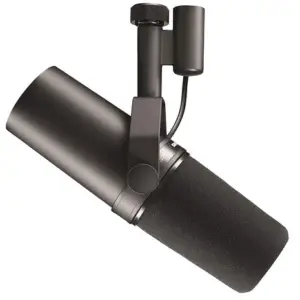 You can use a good microphone such as the Shure SM7B Vocal Dynamic Microphone to record things in a wide range.
You can use a good microphone such as the Shure SM7B Vocal Dynamic Microphone to record things in a wide range.
Don’t worry if you can’t hit high notes like pro singers – that’s where stuff like Autotune comes in handy. Even the greatest singers can have off notes during their recording session, so there’s nothing wrong with a little fix!
4. MIDI keyboard or controller
This part is a little bit optional for those who can’t afford it, but a MIDI keyboard makes the job a lot easier when you want to be able to make music and think of melodies. One thing that you can’t easily do when sequencing using a mouse is to scale keyboard keys to think of a melody or chord progression, which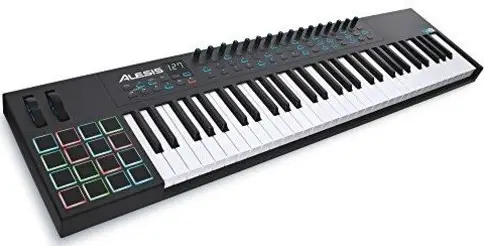 a MIDI keyboard might be able to help you do.
a MIDI keyboard might be able to help you do.
MIDI keyboards for beginners can be helpful for starting your own home studio, such as the Alesis V61 | 61-Key USB MIDI Keyboard. It may not have 88 keys in total, but it will be great for beginning your musical journey. This MIDI keyboard even has its own set of drum pads, so you also get a piece of Novation Launchpad in one gadget.
5. Monitors and/or Headphones
Monitors (not your desktop monitor) are also called speakers and they are basically a recording engineer’s term for such. What they do is simple – they play back your music for you on a live basis, in which you have to make your studio space acoustically-treated to hear it properly. On the other hand, you can also use headphones to hear every detail from your mix much better.
6. Other Musical Instruments (guitar, violin, saxophone, drums)
If you can play other musical instruments then why not put them in your studio? You can record them using your microphone at most, but make sure the room is acoustically-treated so they sound much better.
What do I need for a home recording studio?
If you want to upscale your music making gear at home, you can build your own home recording studio with the following:
1. Soundproofing materials
These refer to egg carton shaped objects that you can put up on a wall, or even 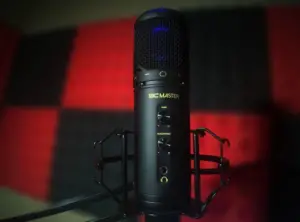 stuff called “soundproof booths”, which also contain such foamy objects. Basically, what these materials do is to isolate your sounds from the outside world so you can monitor them more properly and you can mix them in a more professional and clean-sounding way.
stuff called “soundproof booths”, which also contain such foamy objects. Basically, what these materials do is to isolate your sounds from the outside world so you can monitor them more properly and you can mix them in a more professional and clean-sounding way.
2. Mixer
Even if you already have a mixer in your DAW, it’s still a great thing to have a live mixer in your home recording studio, especially if you already have many musical instruments. A great mixer, to begin with, would be the Mackie PROFX8V2 8-Channel Compact Mixer with USB. Whether you’re starting a bedroom party as a DJ or just mixing from different inputs altogether (e.g. from a live band recording), a mixer like this would be handy due to its simplicity with 8 channels.
3. Pop Filter
If you’ve been to a professional studio, chances are, you’ll come across a pop filter, which is usually used with your condenser microphone. It removes the “p” and “b” sounds that may sound very annoying when you’re recording vocals.
4. Studio Furniture (desks, chairs)
Anything else you’d like to add to your studio, such as desks for your workstation and mixers, racks, chairs (make them very comfy for you to sit on), ventilation and the like can be counted as studio furniture.
What is the best music production software for beginners?
There’s an old saying among sound engineers and producers that goes like this:
“Any DAW is just as good as its user.”
That means your skills as a musician, composer, producer and arranger matter more than what DAW you actually choose. However, here are some of the best music production software that you can use if you’re a beginner:
1. FL Studio
Perhaps FL Studio has been one of the most common DAWs that people might 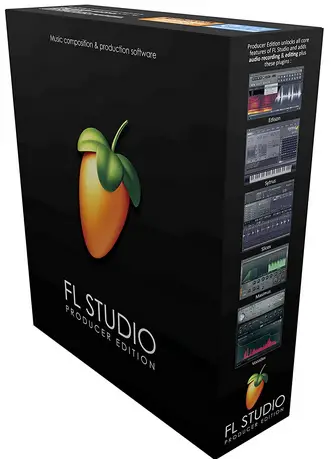 recommend to you, especially if they’re a hip-hop artist from the 90s and the 2000s.
recommend to you, especially if they’re a hip-hop artist from the 90s and the 2000s.
However, FL has come a long way with its improved sound and plug-ins, so many famous artists like Madeon and Porter Robinson have been using them. FL is quite easy for most beginners since there are a ton of YouTube tutorials on it.
2. Cubase
A much more direct sequencer would be Cubase, although its library might require a ton of storage from your computer. If you like working on ballads, ambient music, video game soundtracks, and the like, then this might be for you. BTS and Bighit producers use Cubase based on their IG posts.
3. Ableton Live
Mainly used by the awesome Skrillex and deadmau5, Ableton Live is a go-to for most EDM and electronic artists. It has an interface that’s quite similar to Cubase and most beginners will find it great to learn about as well.
4. Reason
While Reason may not be as popular as other DAWs, it certainly has its charm. Reason can be connected to FL via ReWire and it’s also great for adding breakbeat elements, live drums, acoustic guitar strums and the like. Owl City used Reason before he became a mainstream artist.
5. Logic Pro
If you’re a Mac user, chances are, you’ll get recommended to use Logic Pro out of all the above-mentioned names (although FL also has a Mac version). Logic Pro is very versatile, although some beginners might find it a little confusing t first. David Guetta and Calvin Harris both use Logic Pro.
Best Condenser Microphone for Vocals
If you want to record quality vocals, you may need to have a great condenser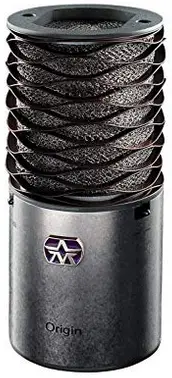 microphone. We suggest the Aston Microphones Origin Large Diaphragm Cardioid Condenser Microphone to start with. This one surprisingly comes with its own pop filter, so you don’t have to buy one separately! Its durable stainless steel design is also going to be great for withstanding years of use (and music touring). This cardioids condenser microphone can be mounted easily on any standard microphone stands.
microphone. We suggest the Aston Microphones Origin Large Diaphragm Cardioid Condenser Microphone to start with. This one surprisingly comes with its own pop filter, so you don’t have to buy one separately! Its durable stainless steel design is also going to be great for withstanding years of use (and music touring). This cardioids condenser microphone can be mounted easily on any standard microphone stands.
The reason why you need to have a quality condenser microphone for vocals is to avoid having a dirty mix when you’re finally mixing your final song output. However, having a consider microphone doesn’t mean your recording will be free from noise, so it’s best to pair it with a very quiet room – or use a soundproof booth for isolating your vocal recording.
Best Studio Monitors for Cheap but Quality Music Production
Studio monitors also matter if you have your own home studio. You can’t 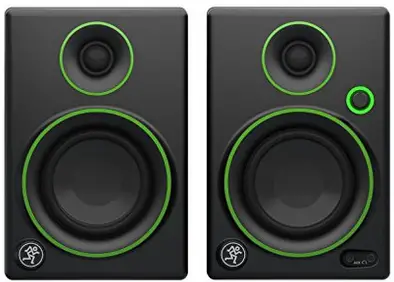 always depend on headphones alone, as they don’t always give the true bass levels of your music.
always depend on headphones alone, as they don’t always give the true bass levels of your music.
You could try the Mackie CR3 CR Series 3″ Creative Reference Multimedia Monitors as a starter studio monitor set. They’re relatively well-balanced in their price and can fit in most workstations and desks at only 3 inches each.
What is Pre-Production and Why is it Important?
Pre-production is basically planning your song or album/EP, kind of like drawing a storyboard for a cartoon or animation. It’s important so that you’ll make your song exactly the way you want it and keep it organized. Here are things you can do as pre-production methods:
- Add markers to the track, such as the intro, chorus, verse, etc.
- Decide on the tempo and meter, and any changes mid-song, if ever
- Record scratch melodies/tracks/vocals of song ideas you suddenly come up with
- Take down notes on where specific lyrics go in your song arrangement
Conclusion
Music production can be confusing at first, but if you have basic gear, knowledge, and skills in music and listening, you’ll definitely be able to make your first song in no time – right in the comfort of your home. We hope these simple tips on how to produce music from home help you out on your journey!
